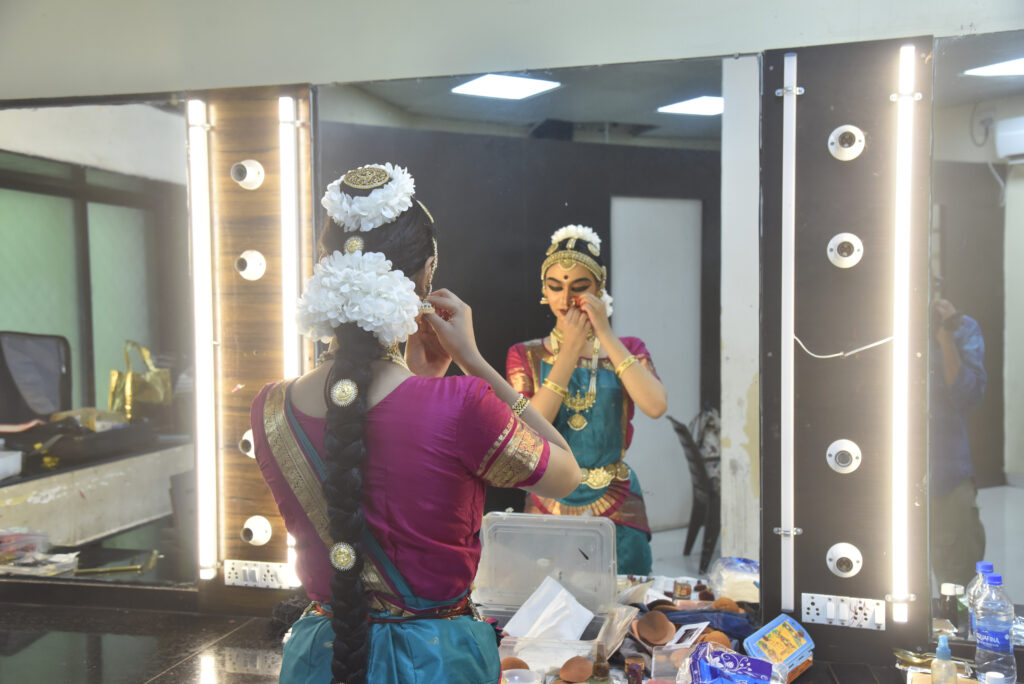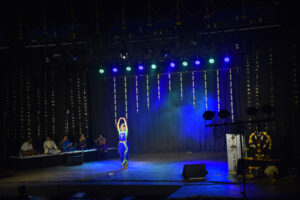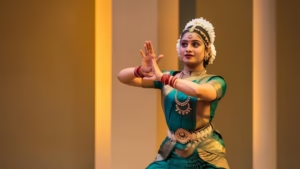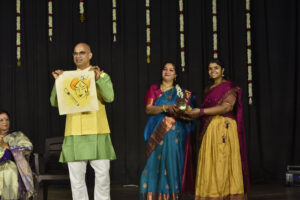They say a daughter’s Arangetram is her grand debut. But let’s be honest—behind every flawless angavastram lies a mother who hasn’t slept, hasn’t eaten, and hasn’t cried only because she physically didn’t have the time.
For those new to the term, Arangetram (literally “ascending the stage”) is the debut solo performance of a student in Bharatanatyam or another form of Indian classical dance. It marks years of dedication, training, and discipline under a guru’s guidance.
This is my story—from a mother’s perspective—of navigating lipstick smudges, lamp oil crises, and limitless love.
Curtain Call Chaos: The Arangetram Build-Up
When my daughter’s guru first said the word Arangetram, my heart skipped a beat. Not from pure excitement—but from knowing what was coming:
- Costume trials and jewellery fittings
- Makeup sessions and photoshoots
- Excel sheets of catering menus
- Lighting cues and rehearsal schedules
- WhatsApp group chaos (with 423 unread messages at any given time)
Meanwhile, my younger daughter was practically raised by her grandmother during this season. I caught glimpses of her between saree drapes and stage rehearsals, and my heart ached—but I knew this milestone demanded everything.
Sarees, Smudges & the Mother’s Perspective
On the big day, I woke up before dawn—curlers in my hair, speech cards in hand, and panic in my veins.
I checked my daughter’s lipstick three times (she swore she could do it herself). I forgot to light an oil lamp. I miscounted snack trays. But when she stepped onto that stage—eyes fierce, posture divine—nothing else mattered.
I watched from the wings as she transformed into Shiva, Krishna, Andal… She was no longer just my child. She was art. Tradition. Storytelling.
And me? I was the mess behind the magic—mascara smudged, silk saree wrinkled, heart overflowing.
Smiles, Tears & Parenting Emotions After Arangetram
After the standing ovation, the flood began. People hugged me, praised her, praised us. My phone exploded with love-filled messages, but I couldn’t reply. I couldn’t even thank half the people who had supported us behind the scenes.
I smiled, nodded, and let gratitude glow louder than words.
The Day After: Reflection on the Bharatanatyam Debut
The next morning, as I folded her costumes and found a broken ghungroo string, I wept.
Not from exhaustion (okay, maybe a little). But from pride—pure, uncontainable pride.
My daughter had arrived. She had ascended the stage. And somewhere in that spotlight, I had arrived too.
To every Arangetram mother: you are the stage, you are the story. Now go eat that leftover laddu—you earned it.
FAQs About Arangetram & the Mother’s Role
What is an Arangetram in Bharatanatyam?
An Arangetram is the first solo performance by a student of Bharatanatyam, symbolizing readiness to perform independently after years of training.
How long does an Arangetram usually last?
A Bharatanatyam Arangetram typically runs for 2–3 hours, including multiple items and intermission.
What is the role of parents in an Arangetram?
Parents—especially mothers—manage logistics like costumes, catering, décor, and rehearsals, while also supporting the emotional journey of the dancer.
How do mothers feel during Arangetram?
From stress to pride to overwhelming joy, it’s an emotional rollercoaster. Many describe it as one of the most moving experiences of parenting.





